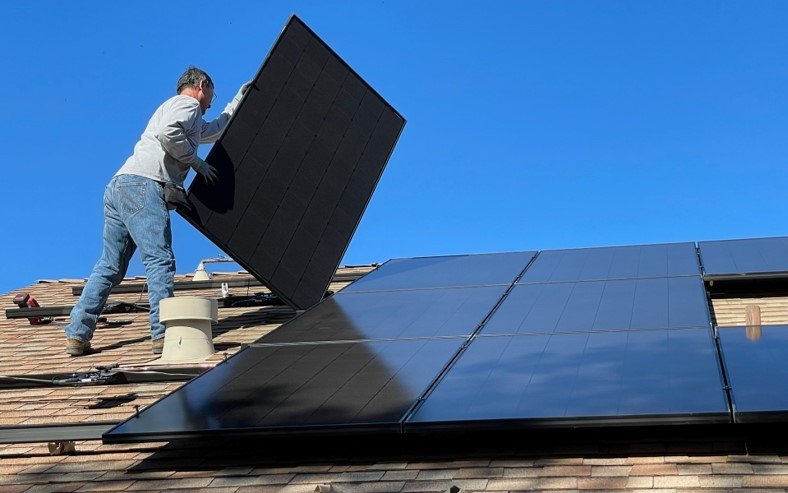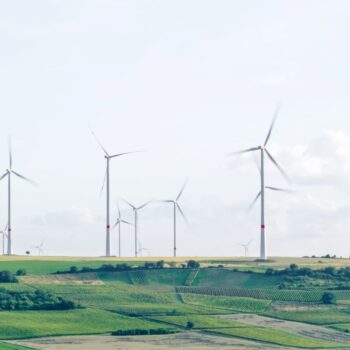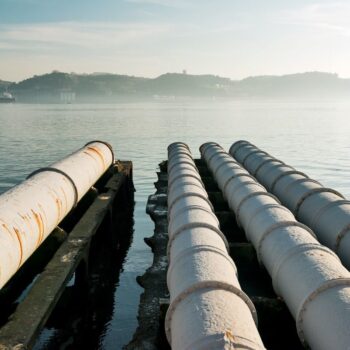The European Commission is expected to release the second part of the ‘Fit for 55’ package on 14-15 December. The measures will cover the gas sector, the energy performance of buildings (EPBD) and the social and labour aspects of the climate transition, among others. It is a critical opportunity for the EU to confirm and accelerate its commitment to delivering a socially fair and climate ambitious European Green deal after COP26.
The delivery of the European Green Deal as the cornerstone of the EU’s political agenda has entered a critical phase. Ahead of COP27, all EU institutions will be under scrutiny to show that they are committed to delivering a socially fair and climate ambitious European Green Deal.
The context
- The “European Green Deal” is the EU’s roadmap to climate neutrality. With the “EU Climate Law”, the EU is also legally bound to reach climate neutrality by 2050 and reduce at least 55% of 1990 greenhouse gas emission levels by 2030.
- On 14 July, the European Commission released the first part of the “Fit for 55” package, a dozen legislative proposals affecting EU policies on climate, clean energy, and transport. They started laying out the necessary architecture to drive the EU’s socio-economic transformation to climate neutrality.
- Compared to July, the political context has changed. International and domestic developments add to the pressure to deliver socially fair and climate ambitious proposals. Particularly, COP26 offered a political lifeline for accelerating action in 2022 to keep temperature rise below 1.5ºC.
- Energy price hikes are severely affecting EU citizens, in part because of EU reliance on fossil fuels. The second part of the “Fit for 55” package is an opportunity to send strong political signals and advance specific measures that allow energy bills to deflate by accelerating a green and fair transition.
What to look out for in the new ‘Fit for 55’ proposals?
The December package can be an opportunity to deliver a socially fair and climate ambitious European Green Deal. With this package, the EU could:
- Accelerate the delivery of the European Green Deal (gas, EPBD)
- Broaden citizens’ support for climate action (gas, EPBD, social dimension)
- Communicate the inevitability of change in consumption patterns and send clear signals to markets about the transformation (gas, EPBD)
- Improve governance – avoiding conflict of interests (gas); striking the right institutional balance (EPBD); fostering inclusive stakeholder participation (social dimension).
In practice, this could be achieved by:
- Substituting gas with renewables to reduce energy prices, give citizens back control over their energy and provide secure, stable, and affordable energy for all.
- Renovating homes to make them more energy-efficient, reduce energy bills, ensure basic thermal comfort is accessible to all, and create new jobs.
- Strengthening provisions across policy files to strengthen fairness, inclusion, and participation without relying solely on the Social Climate Fund.
Revision of the third energy package for gas
Gas usage needs to decline by more than 30% by 2030 compared to 2015. This package will need to set the framework for a world where fossil gas consumption is reduced significantly and where scarce resources such as renewable hydrogen are used where no other solutions exist.
- One of the key aspects will be the provisions regarding the future of energy infrastructure. To be “Fit for 55”, infrastructure priorities should be consistent with the 2030 and 2050 climate targets and based on science. Legislation needs to be clear on when to end the exploitation of fossil gas infrastructure in order to be compliant with climate targets or require national plans to do that.
- The industry should no longer be deciding future infrastructure needs without independent checks. This could be achieved by ensuring independent decision-making, strong safeguards of transparency and including a wide range of stakeholders from the very beginning of the planning process.
- With the decrease in gas consumption, gas distribution networks will see a fall in utilisation. The gas package should put into place processes that manage this decline in order to avoid a situation where consumers who are unable to switch are left to face escalating costs.
- The legislation should ensure users of the existing gas network are not made to pay for the development of zero-emissions gases if they do not use them.
- The recent energy price crisis shows that protecting consumers is a critical element of this package and the energy transition in general. The gas package should incentivise consumers to move away from fossil gas, rather than imposing high penalties for those unable. Encouraging and supporting consumers to switch from fossil gas to cheaper and cleaner alternatives is one of the best ways to decrease reliance on gas and vulnerability to price shocks.
- The package should also avoid any reference to the blending of hydrogen and fossil gas, which risks supporting an inefficient use of hydrogen. Hydrogen should only be targeted to decarbonising end uses where no alternatives exist.
Revision of the Energy Performance of Buildings Directive (EPBD)
Buildings in Europe represent 40% of energy consumption and 36% of emissions. Accelerating deep energy renovation, setting strong standards for new buildings and scaling-up decarbonisation of heating and cooling, are critical to ensure a fair and affordable transition to climate neutrality and a reduction of the EU’s structural vulnerability to volatile gas prices.
- Europe is not renovating its buildings fast enough. EU climate targets require 3% of buildings to undergo deep renovations (at least 60% energy savings) every year by 2030. However, the rate is currently 0.2%. An increase in current investment to around €2.75trn is needed for energy renovation this decade – when the EU’s construction sector turnover was €2.65trn in 2018.
- The EPBD revision can stimulate buildings renovation rate and depth, in alignment with other “Fit for 55” reforms (especially the Energy Efficiency Directive and the Renewable Energy Directive, which include targets and sub-targets for buildings, heating and cooling). It is key that renovation is deep enough so that vulnerable households don’t get trapped in slightly better but still poorly performing buildings.
- New buildings should all be Zero Emissions, which entails a fossil heating and cooling phase-out by 2030, since the largest chunk of buildings operation emissions come from heating and cooling.
- Mandatory Minimum Energy Performance Standards (MEPS) can be a policy flagship and send a clear signal to investors, suppliers and installers. This requires complementing tools: a good Energy Performance Certificate (EPC) regime, a Buildings Renovation Passport and ‘digital logbooks’ to provide visibility and trust to consumers.
- It is also a prime opportunity to integrate embodied emissions linked to the production of materials in the policy framework, stimulating markets for clean and circular construction materials.
Council Recommendation to address the social and labour aspects of the climate transition
This Council Recommendation on addressing the social and labour aspects of the climate transition – including the implementation of the Social Climate Fund – is an important opportunity to steer the “Fit for 55” package in a socially fair direction. One way of doing this is by fostering shared ownership via inclusive participation and governance – an aspect that continues to be overlooked in the green transition.
- The EU needs to move beyond using compensation to ensure that the “Fit for 55” package is ‘fit for society’. This responsibility cannot lie with the Commission alone as social policy is a national competency. Member States have an equal role to play in owning and shaping the social offer by working together with local governments and all affected stakeholders, including citizens.
- Stakeholder participation in EU funds remains a tick-box exercise, impacting both the level of climate ambition and the representation of public interests in climate plans and proposals. As the Commission’s main social offer, the Social Climate Fund cannot afford such lapses. It should instead be a crucial opportunity to embed inclusion, participation, and fairness into the green transition, but will need binding requirements for co-design and the political will to see it through.
- At the same time, the Commission cannot rely on the Social Climate Fund alone. This would entail a major political risk as the very set-up of the Fund depends on the extension of the Emissions Trading System. This is why a concerted effort is required to lever and connect with other relevant aspects of “Fit for 55” proposals, such as provisions to ‘consider’ the role of renewable and citizen energy communities in the Energy Efficiency Directive revision. Such provisions need to be made bolder and stronger.
Available for comment
E3G experts are available for commentary – please contact them directly.
| Name Name | Expertise | Contact details |
| Lucie Mattera (EN, FR) | Overall Fit for 55 assessment & EU politics | m: +32 (0)489 00 44 76 lucie.mattera@e3g.org |
| Raphael Hanoteaux (EN, FR, ES) | Gas, Hydrogen, and Renewables | m: +32 (0) 496 205 903 raphael.hanoteaux.@e3g.org |
| Adeline Rochet (EN, FR) | Energy Efficiency, buildings renovation, heating | m: +32 (0) 470 118 580 adeline.rochet@e3g.org |
| Namita Kambli (EN, FR, DE) | Just transition, social dimension | m: +49 170 928 98 56 namita.kambli@e3g.org |
| Brick Medak (EN, DE) | German politics | m: +49 151 22889448 brick.medak@e3g.org |
Follow E3G on Twitter at @E3G for live updates and reactions on the release date.


